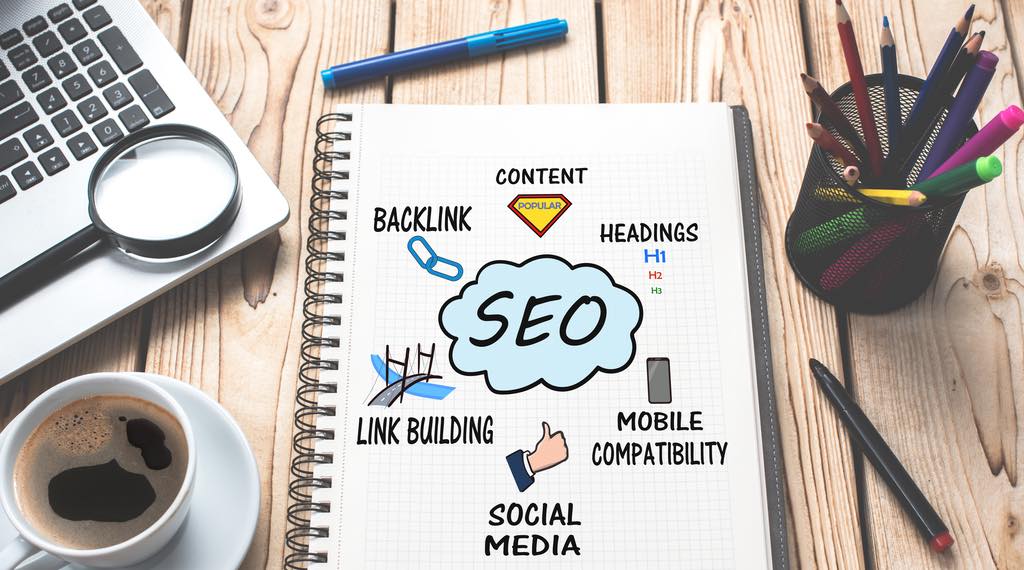
Images for SEO
Images for SEO is your secret sauce to optimising your website for search engines.
In our Search Engine Optimisation (SEO) course and our SEO in 15 minutes video we talk a lot about the importance of text. Google loves text and the more keyword rich, and relevant text you can have on your site the better search engines will be able to find it.
How-ever images can also be optimised.
Image SEO is crucial for a website's engagement and user experience. Both these factors ultimately lead to higher traffic and better rankings.
You could be losing a lot of traffic by not optimising your images. So here’s our 6 tips to optimise images for search engines.
1. Choose an SEO Friendly File Image Format
There are lots of different image formats (eg. .tiff, .svg, .eps, .gif), but in this article we’ll focus on the main two file formats you'll come across on your website. They are:
- .jpg
- .png
JPEG
The most common file format is .jpg. Use .jpg in preference to .png, when the image file is a photo.
PNG
Graphic and logo files are often .png They support transparent backgrounds and this makes them ideal for logos, icons, and graphic files.
2. File Size
After selecting a file format, the next step is to resize or compress the images you want to use.
File size, that is whether your image is 100kB or 2MB, is very important to page load speed, and hence important to SEO. Most photos on websites need to be 100kB or under. Learn how to re-size your images using your own graphics software or using free online tools like jpeg.io.
3. Choose an SEO Friendly File Name
Unlike text, which Google can read instantaneously, with picture files you have to help the search engine crawlers understand the subject matter. The most effective way of doing this is to name the image file clearly, before you upload it to your website.
The best image file names
- Use keyword rich and descriptive words
- Don’t use stop words (such as in, a, an, as and the)
- Use hyphens, not underscores
The following are poor examples of image file names
- Dsc011345.jpg
- Image_rt_final.jpg
- Logo_v2.png
The following are good examples of image file names
- Mount-Fuji-In-Snow.jpg
- Texas-Plumbers-Bathroom-Renovation.jpg
- Bristol-Florist-Logo.png
Here’s an ok example of a product image file name
- Plastic-lid.png
Here’s a better example of the same product image file name
- Silicone-dog-food-can-lid.png
By re-naming the images before you upload them to the website, you will create a default URL path that has the keyword rich and descriptive text in it. For example, the image’s URL for our dog food can lid might be:
https://petfood.com.uk/silicone-dog-food-can-lid.png
4. Alt Text
Alt text (or alternative text) was originally designed, and still plays a large part, in giving access to image information to people who are using a screen reader (for example if you have low vision).
For best results for your images for SEO, add the alt text.
In most cases you can use the file name you’ve created earlier, and add it to the alt text field in you website media library. Most website builders, including WordPress, make it easy to add the alt text for an image.
5. Use Copyright-Free and Royalty-Free Images
Just because you find an image on Google does not mean it is free to use. Abiding by copyright is an essential aspect of good business, and for your image SEO.
Uploading photos from Google and ignoring their legal status can ruin your reputation and penalisze your blog or website if things get serious. Being careful is the key when selecting images for your site.
Any photo you have taken yourself can be used. If you have hired the services of a professional photographer ensure you have the appropriate documentation or sign off to use the photos on your website, social media channels, printed material and in your advertising.
Photos you have purchased from reputable stock images sites, like Stock Photos, and others, are a cost effective way to get copyright-free and royalty-free images to use on your site.
6. Good-Quality Images
Good quality photos provide a good website visitor experience, and therefore is good for your image SEO. Photos need to be:
- In focus
- Have good lighting
- Be well framed
Choosing high-quality pictures to begin with means that when they are resized and compressed, their colour contrast and resolution will still look good.
For the Professionals
There are even more things you can do to optimise your images for SEO, for example:
- add meta-data to your images
- use structured data on your website
- Create an image sitemap
If you are hiring an SEO expert, this is the type of thing they might look at for your site’s SEO.
The Opportunity
Given most websites don’t have their images optimised for search engines, you can make a surprisingly effective impact with the above 6 tips.
View our FREE SEO lesson
Like more? Check out our SEO course.

SEO Course
A practical, step-by-step video course with screenshots, examples, explanations and demonstrations. Carefully created and produced video tutorials for your learning.
Especially suitable for e-commerce sites or multi-page websites.

